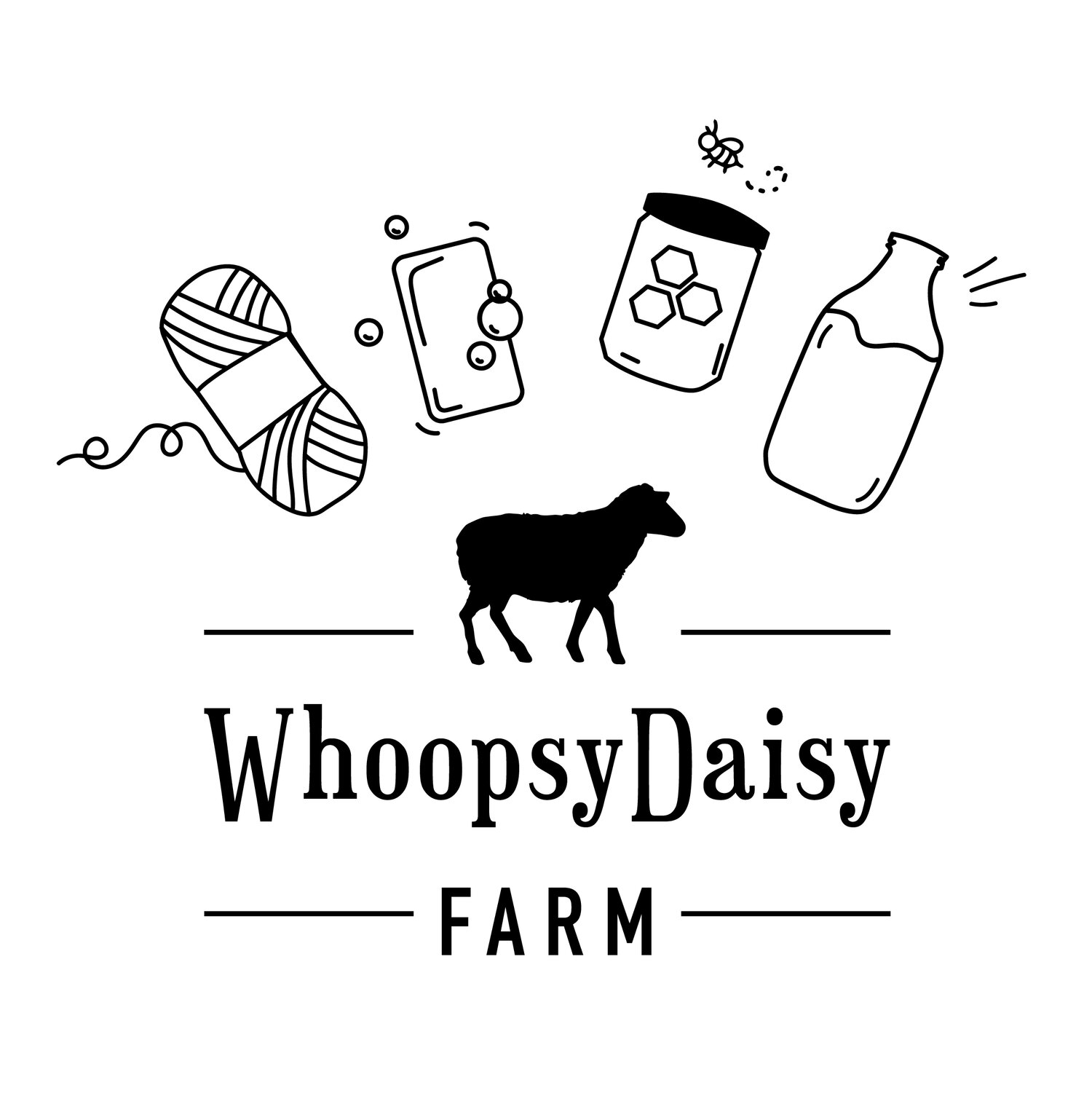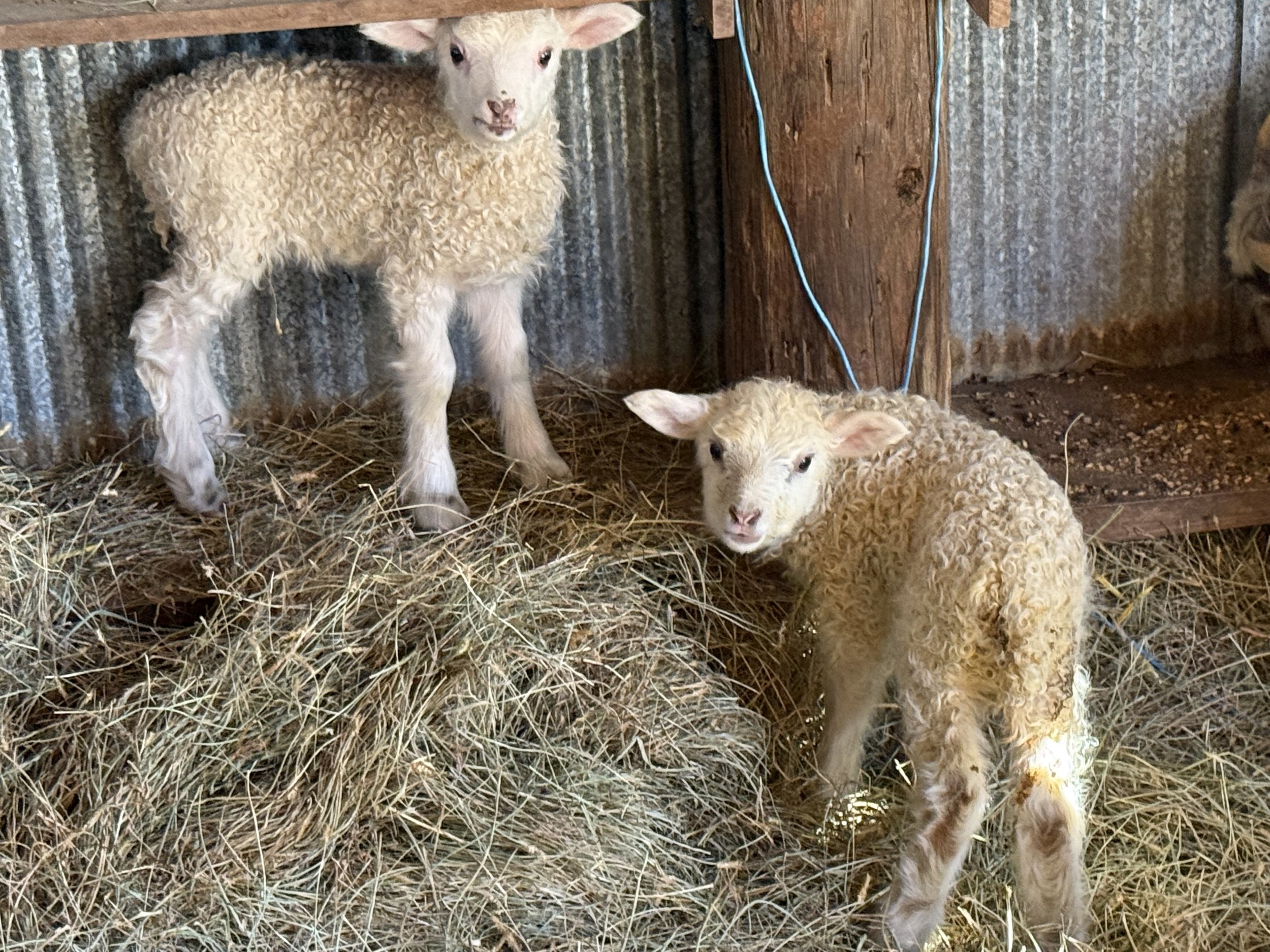The Dairy Shepherd’s Year
The Dairy Shepherd’s year
Dairy cross ram lambs playing in their jug while their mother is milked
When we brought our first sheep home on Mother’s Day, 2020, I had no idea how the rhythm of my life was about to drastically change. Up to that point we’d had a rather modest homestead - we had honeybees, chickens, ducks geese, and a heroic attempt at gardening with no topsoil on our foreclosed property. Up to that point, my year pretty much looked like this:
Spring - oh thank goodness we survived cold, boring winter. Hurray for seedlings, chicks, warmer temperatures, and fresh veggies at the farmer’s market. Cheerful baking of post-worthy goods for breakfast with a cheerful bouquet from the garden graces our table.
Summer - Oh boy it’s hot. Hurrah for veggies though. Shall we go on vacation? When is that family reunion function? Which should I pay more attention to - the garden or housework? Let us prepare a delightful garden fresh salad for our meals.
Fall - ah the green things are winding down. Time for harvest festivals and pumpkin spice everything. Let’s gear up for the holidays. Cooking all the delicious food. And… oh no. Winter is coming.
Winter - dang it. Its cold and boring and everything is dead outside and I’m bored. Oh well lets obsess over seed and chicken catalogues.
Seasons didn’t really effect my daily life that much in a drastic way. There was our veggie garden of course, but due to a marked lack of topsoil it didn’t really thrive and therefore didn’t consume my year the way shepherding has.
When one lives an agrarian lifestyle, in order to succeed one must adopt a forward thinking mentality. One plants a garden in spring with thoughts of the harvest in the fall. Dairy shepherding requires one to think seasonly, think a few seasons ahead, and even embrace the thought process of a few years down the road.
Dairy sheep genetics are incredibly rare in the United States, and so in order to keep one’s flock genetically viable, there must always be a strategy in mind for where one wants to take one’s genetics. Are we retaining any ewes or ram lambs from the spring crop of lambs for future breeding? How did last spring’s lamb crop do - is the ram still producing decent lambs, or do we need to think about bringing in fresh genes? That ewe’s lactation volume has started to decline… but she has other great attributes.. is it time to start raising up her replacement or do we have a few seasons left with her?
This is just the forward thinking one must adopt with herd dynamics and genes.
Now that sheep have pretty much overtaken my life thanks to their delicious and nutritious milk, this is more what my year looks like:
Winter: Oh thank goodness. We get a break! Breeding groups have been separated into their assigned paddocks, all we have to do is feed hay, water, and rest. We eat three square meals a day. Spinning happens, knitting projects get completed, books are read and we might even catch up on a TV show.
Early Spring: Lambs! Midnight checks on the expectant ewes. Making sure lambing jugs are ready and clean. Milking season of new mama’s begins. Recovering from any stressful lambings that required intervention. Food for the family consists of eggs that the chickens have mercifully begun laying again after the winter dearth.
Middle spring: Milking season is fully underway. We begin separating lambs at night for morning milking and rotate the breeding flocks through different pastures. The refrigerator mainly houses milk at this point. Food is milk and eggs, eggs and milk. At some point I’ll remember that we have a freezer full of meat that just needs thawing in order to be cookable…
Late spring/early summer: Shearing! Hooray for all that lovely wool. Now where to store it until I can get to processing it… Milk continues to flow abundantly but by this point we’ve found our rhythm and we’ve added some vegetables and meat back into our diet. Lamb antics are in full swing and its hard to get to bed at a decent hour between watching the fireflies and lampedes. This is the best time of year for me to wash, dry, and comb wool outside…. Now if I could just find the spare time to do so…
Summer: parasite season is in full swing and we have to check the ewes weekly to make sure no one has gotten suddenly anemic. The ewes have used up all their nutritional stores and are at their weakest and most susceptible to illnesses and parasites. It’s hot, and keeping shade shelters in repair and fresh water available is also imperative. Electrolytes for animals and people constantly flows. Lactation starts to decrease and everyone begins to look forward to the end of milking season.
Fall: Ewes are dried off and we check body condition to see who we feel comfortable breeding back, and who needs a break. The ones getting a break go in with the spring ewe lambs and yearlings in a separate flock away from the rams, and we call this our ‘maiden group.’ We then take our ram of choice for that fall and put him in with our ‘milking mothers,’ and then put the rest of the ‘bachelor’ ram flock out away from everyone else. They can still smell everyone but if they can’t see the girls they seem to be less antsy during rut season.
By October we have taken a deep breath and realized we have made it once again and survived a full shepherding year.
My dairy genetics aren’t super high percentage - the dairy sheep in the United States are all still in ‘breeding up’ programs, meaning that semen has been imported and used to impregnate ewes, and the resulting offspring is only a 50% cross of the desired dairy genetics. Those offspring are then impregnated with semen or bred to higher percentage sheep and so on until we reach about 97% desired genetics. This sheep is then considered an Americanized version of the desired breed.
What this means is that, in order to milk sheep in America, we must either be flexible with our breed preferences or invest in very expensive sheep. My ewes all have East Friesian, Awassi, and Lacaune genes somewhere in their family tree, but they are also crossed with other heritage and hardy breeds. So my milking window is only about 6 months, instead of the 8-10 months I could get with more pure dairy lines. At some point we may invest in upping our dairy percentages, but in the meantime my milking year with sheep is six months on, six months off. This gives my ewes about a month between drying off and breeding back to recover body condition and replenish nutritional stores.
I want my flock to be hardy, as they are helping me regenerate our property. When we moved here and had our soil tested, we had virtually no topsoil. Sheep have historically been used to remediate land. Through our shepherding journey, we have learned that its typically the males or sheep being raised for meat that are best used for soil rejuvenation, whereas milking mothers need higher forage quality and ought to be left to enjoy the already improved pastures. On our homestead, we try to not focus on solely one trait when selectively breeding. Yes, milk production is a priority. But so is lambing without assistance, good mothering traits, useable wool, and parasite resistance. In other words, I want it all. But when we want our animals to produce it all, we must realize that the compromise is that they can’t produce a lot of all of it. My parasite hardy, soft wool producing, amazing mothering Tunis-East-Friesian-crosses produce about a quart and a half to a liter of milk per day. A high percentage East Friesian who produces almost a gallon of milk per day will have far less parasite resistance, coarser wool, and will probably need help lambing and may not be the best mother. That’s not a guarantee but hopefully you see what I mean - that East Friesian has been bred to super-produce one product at the expense of other traits.
My views on genes and multiple-trait-producing animals was heavily influenced by the Romanian peasants who first introduced me to sheep milk products in the first place. In that part of the world, specialty and pure breeds were less of a priority than sustainable agriculture and dependable production of food. Sheep needed to be able to provide milk, meat and wool, without causing their shepherd an overabundance of stress by propping them up on huge feed or medicine imports.
Shepherding has a reputation of being stressful, especially during lambing time. I love raising sheep, I love consuming sheep milk, and I dislike being stressed all the time. Therefore I try to manage my flock to where we are all thriving and skip the stereotypical stress of shepherding. Through proper management of the sheep, I think it is quite possible that others may do the same.

